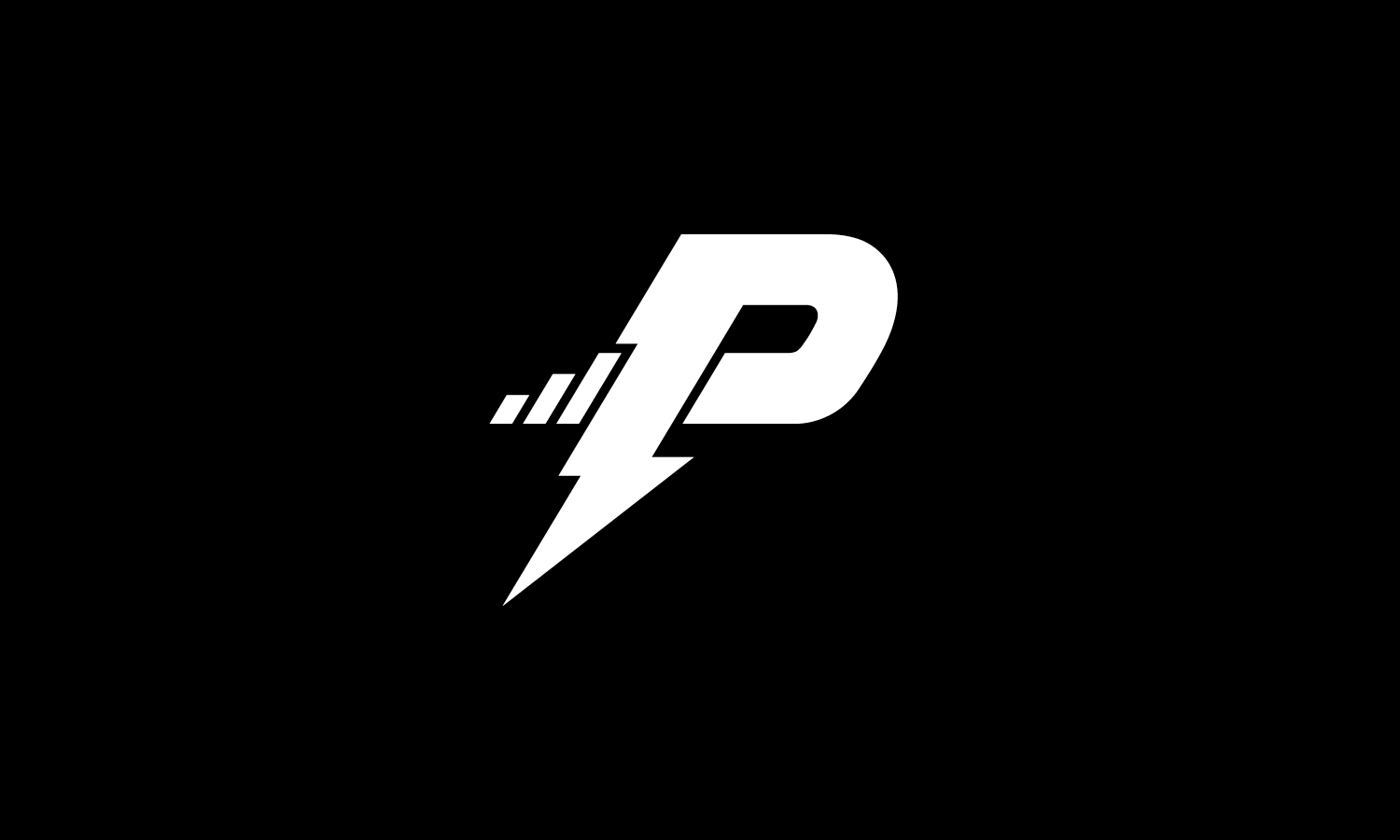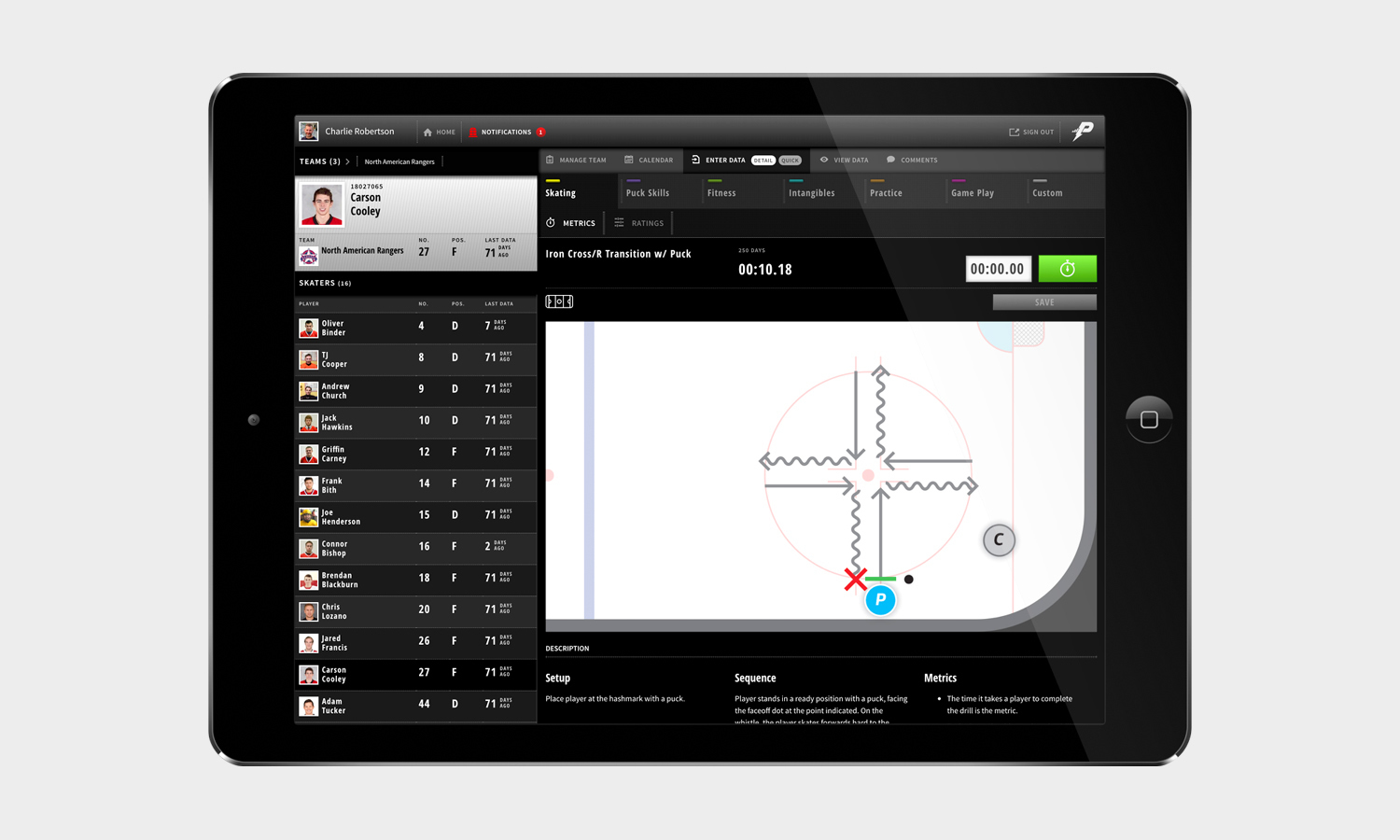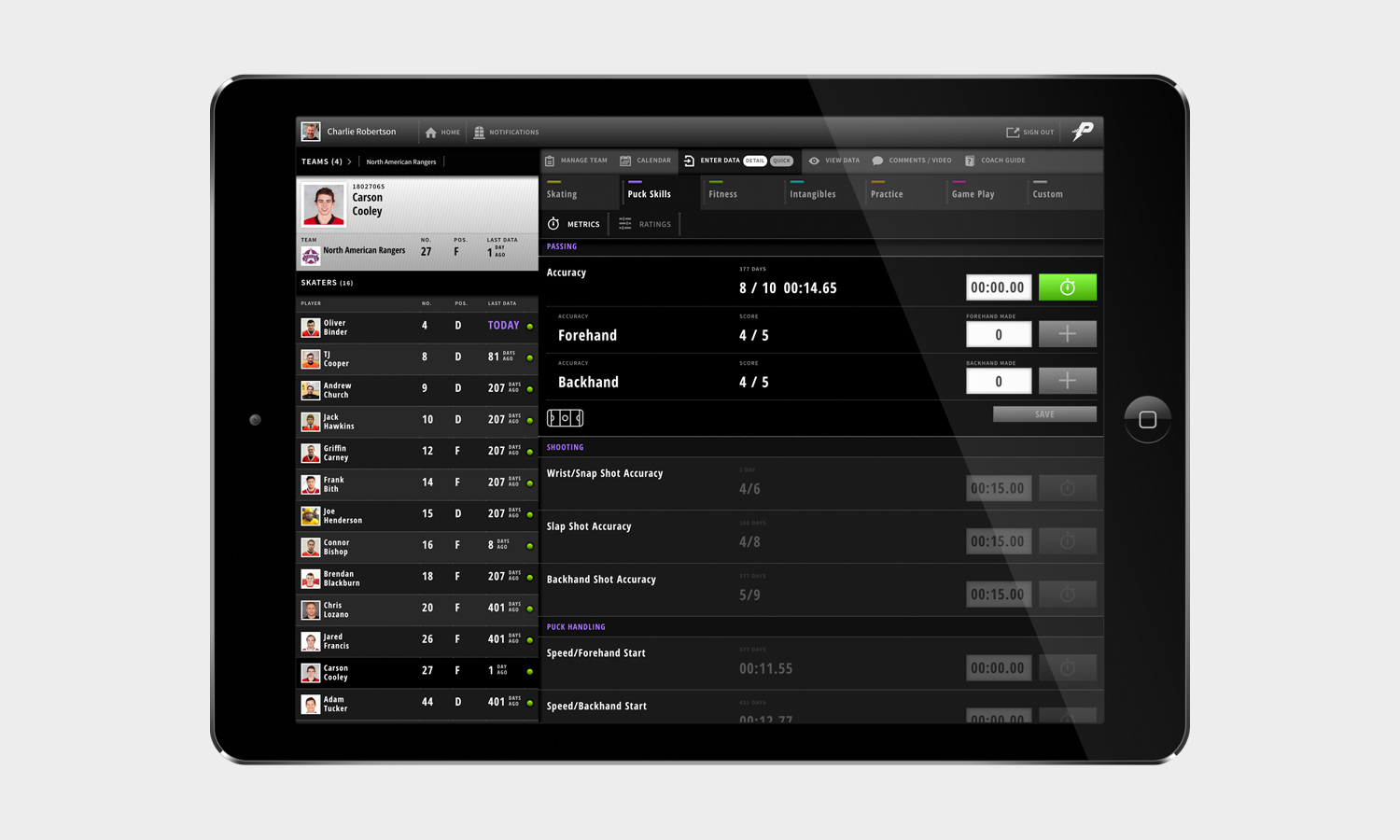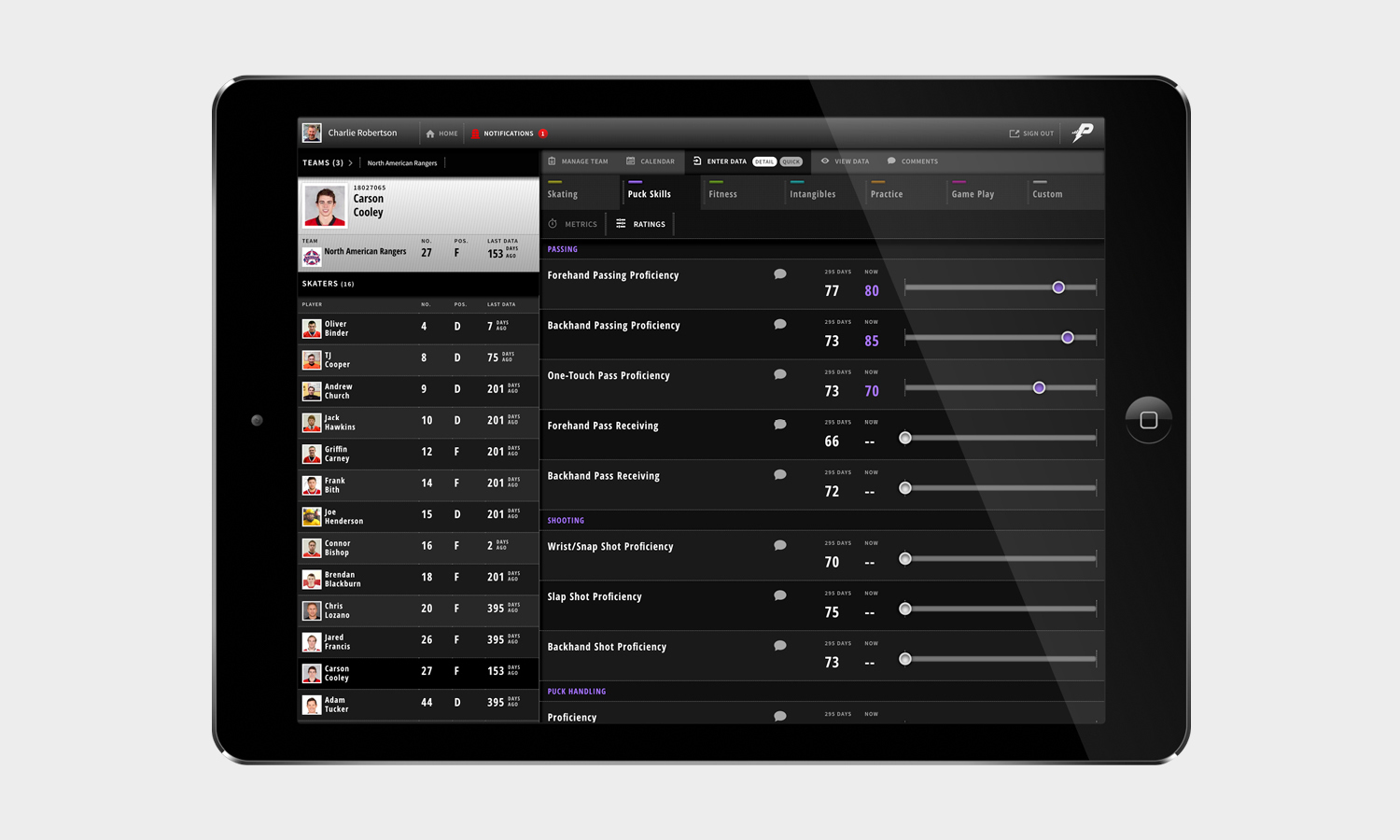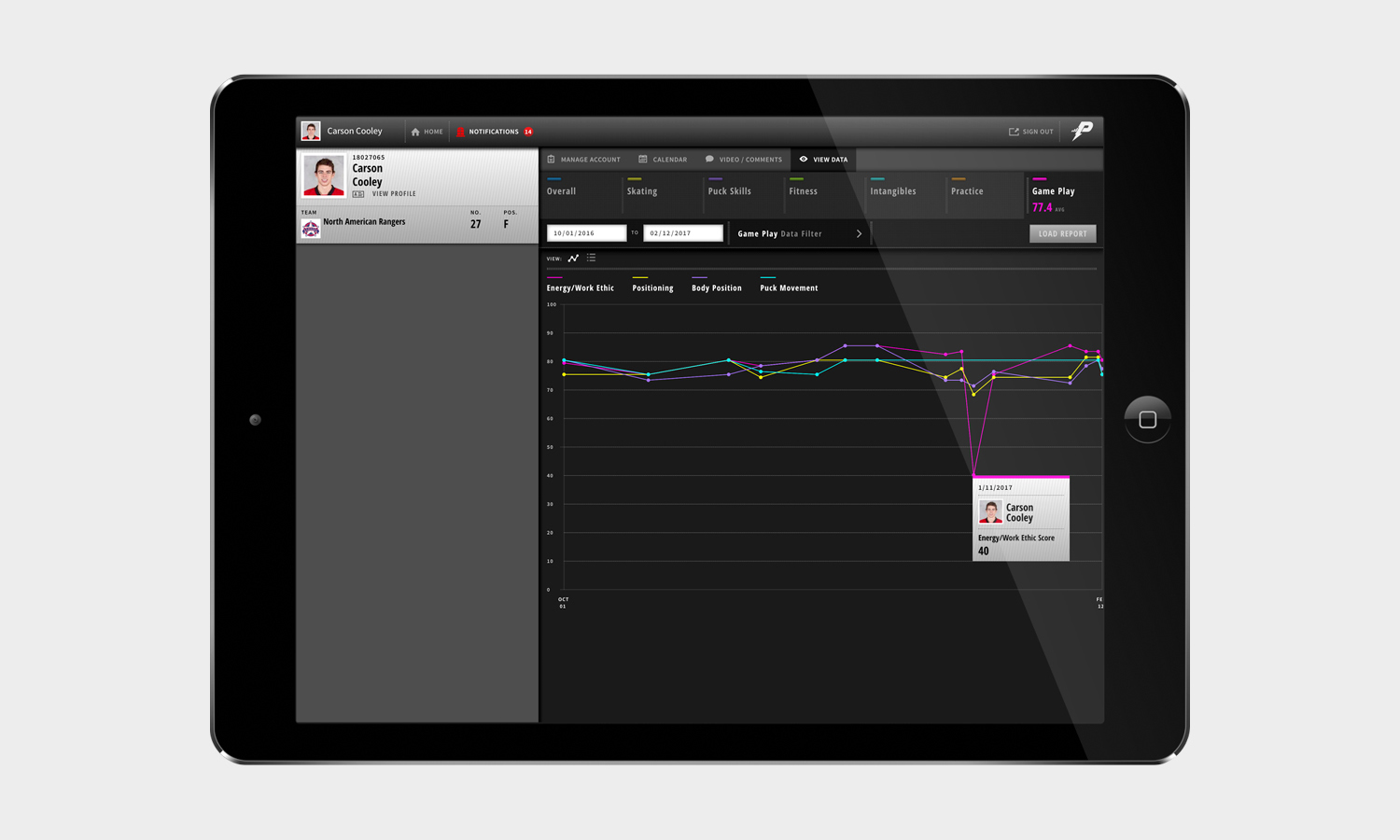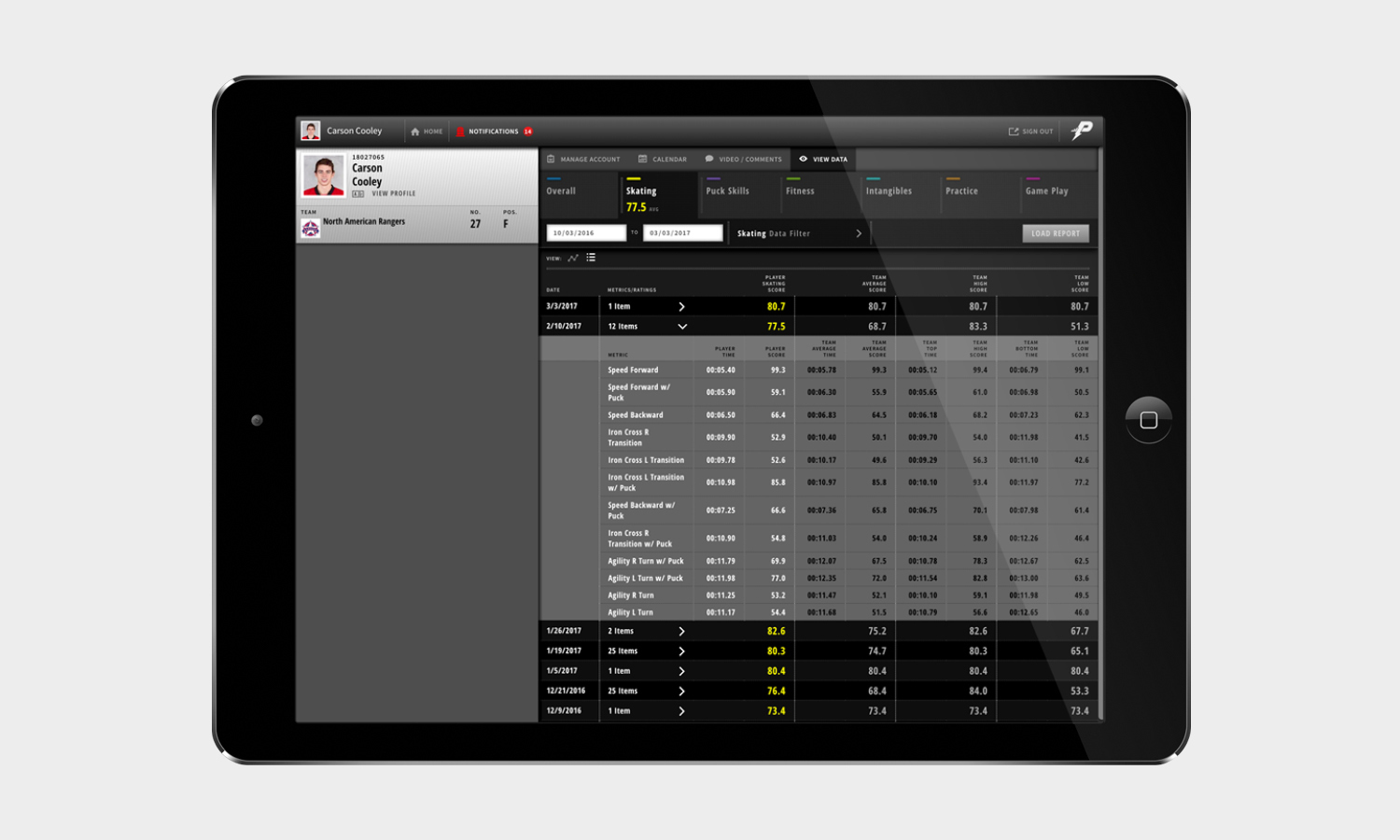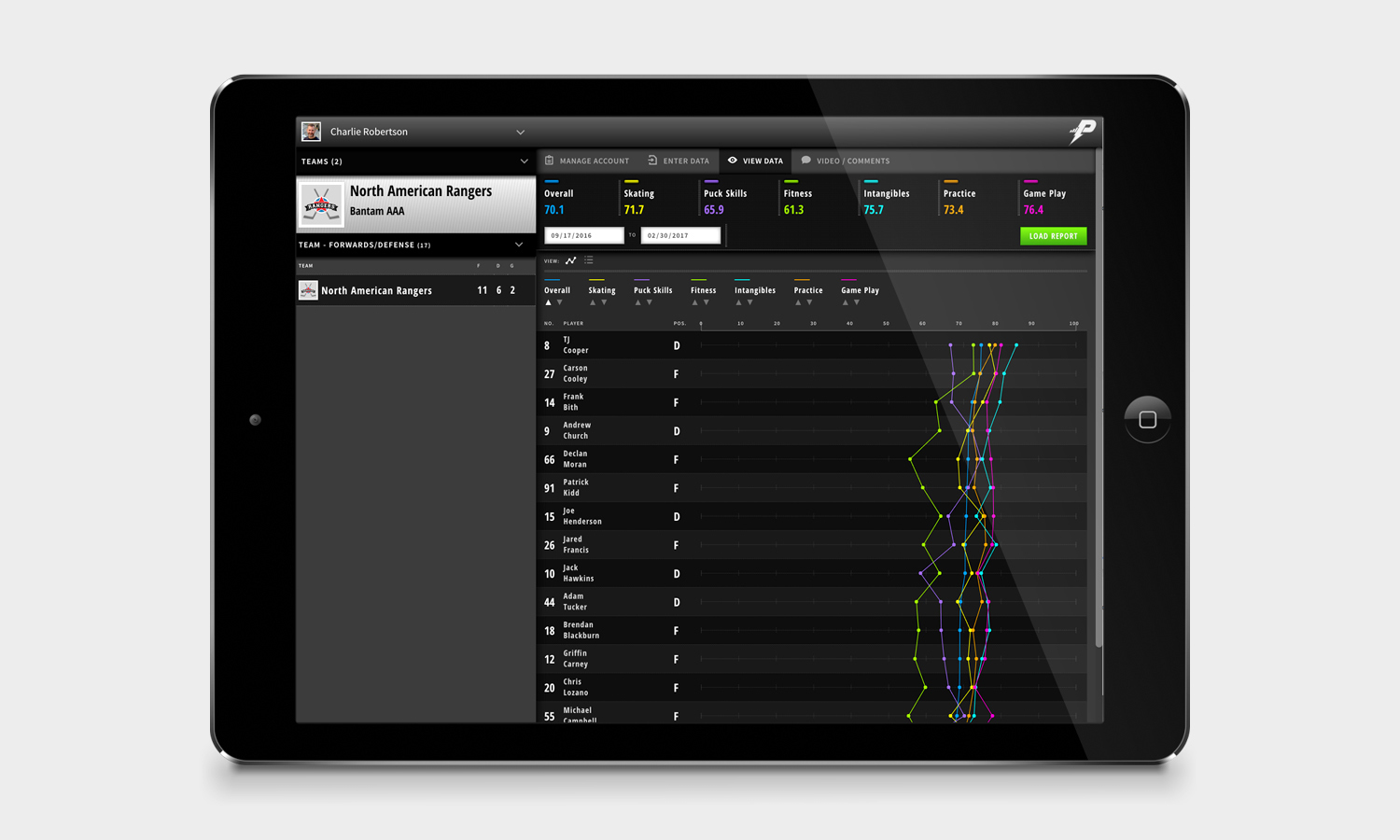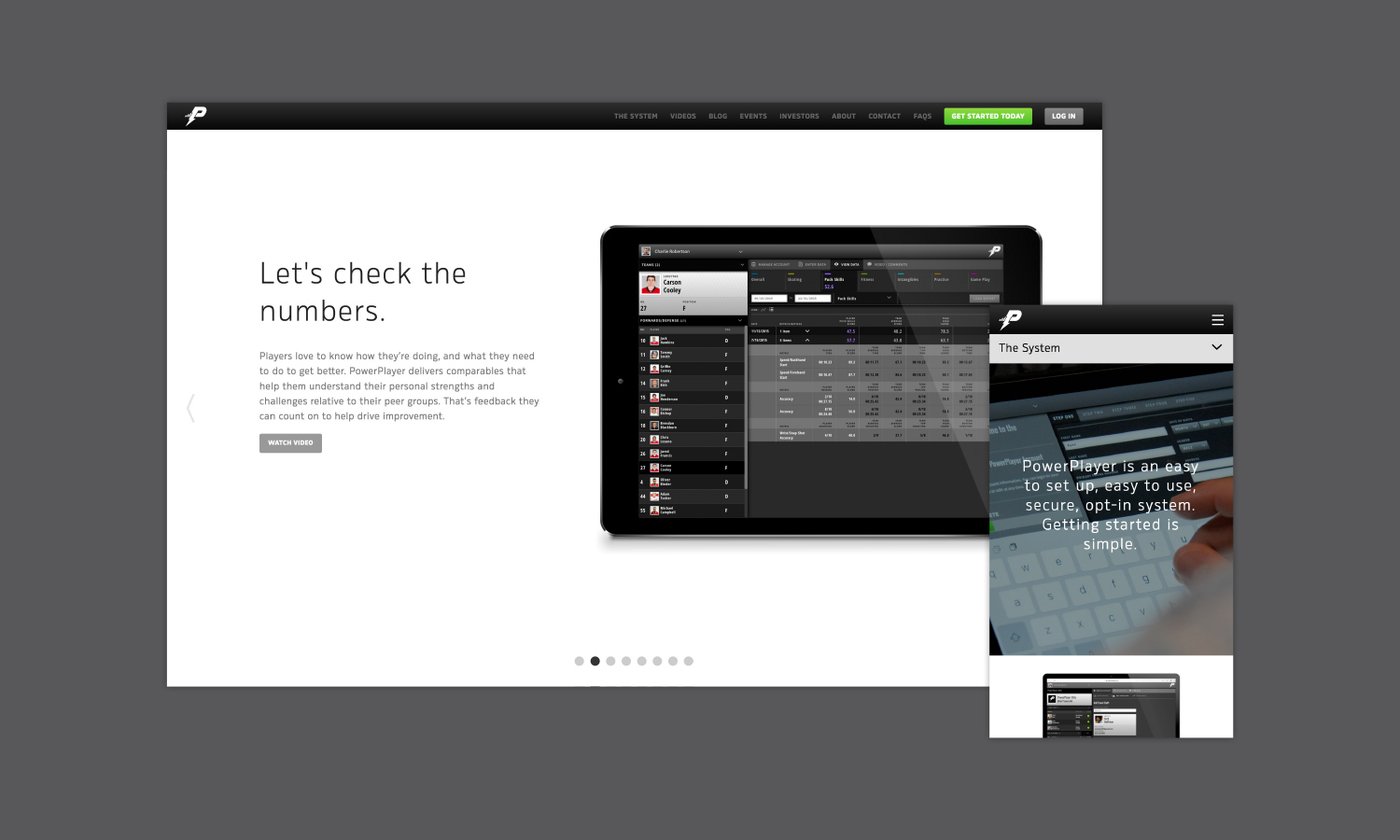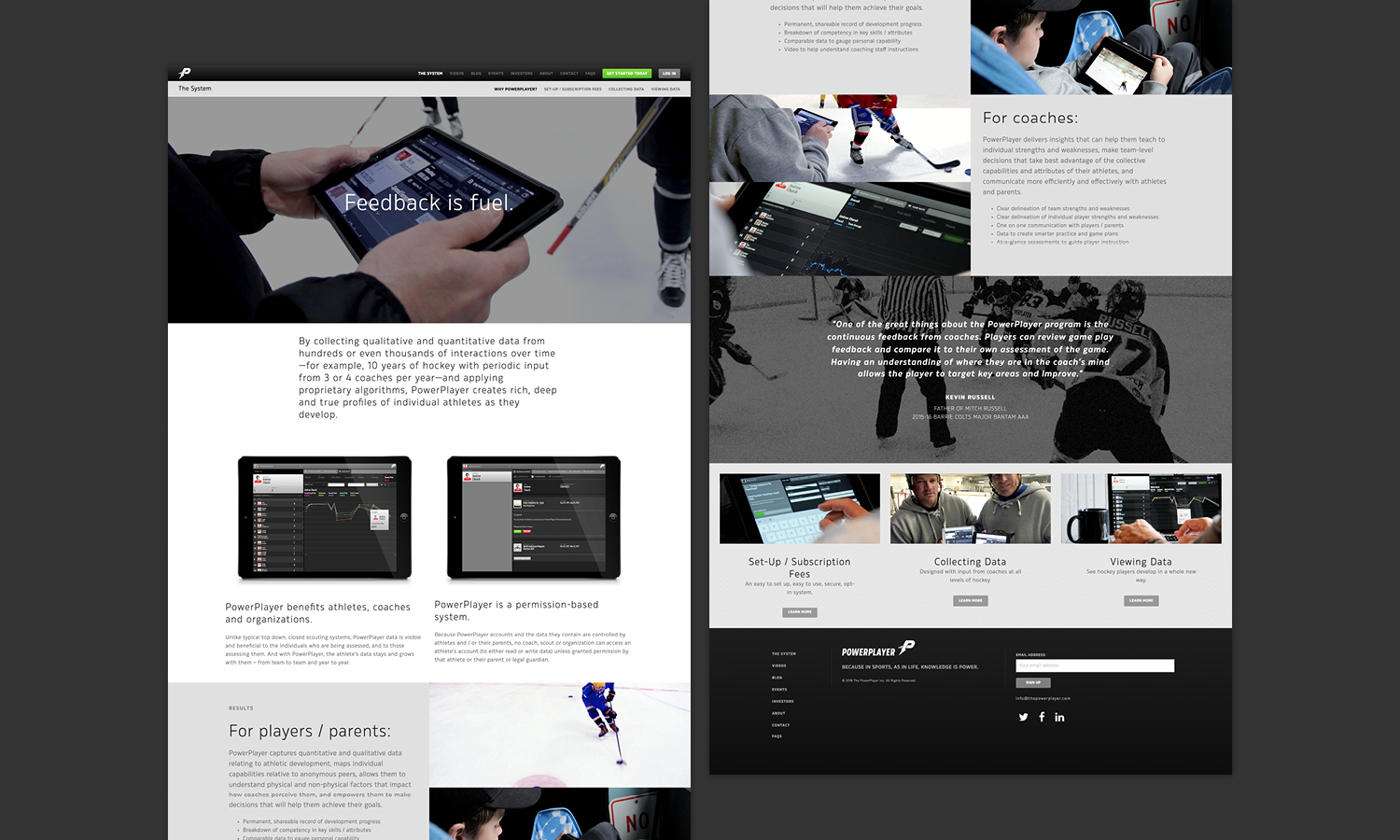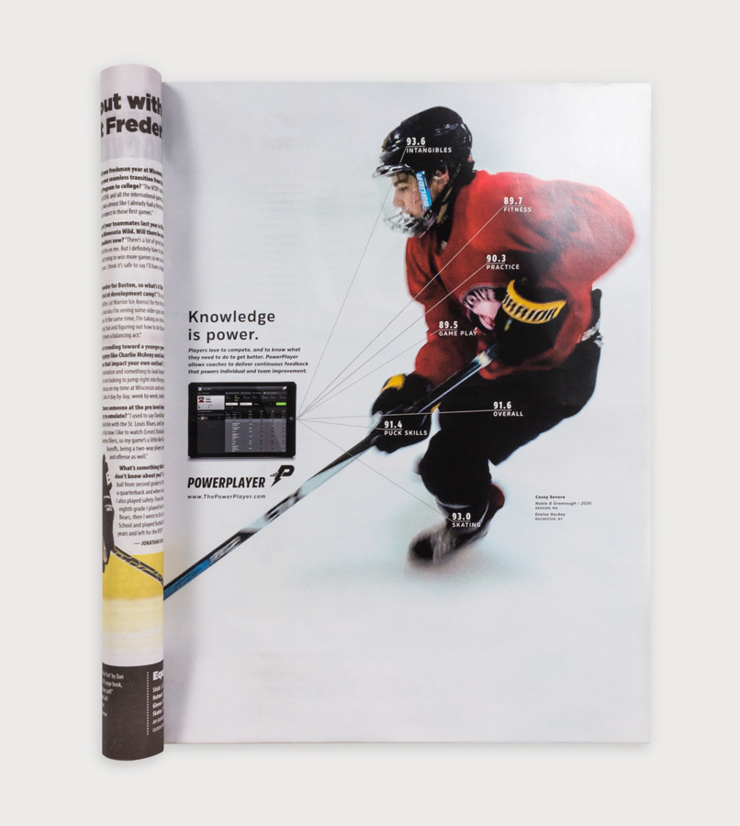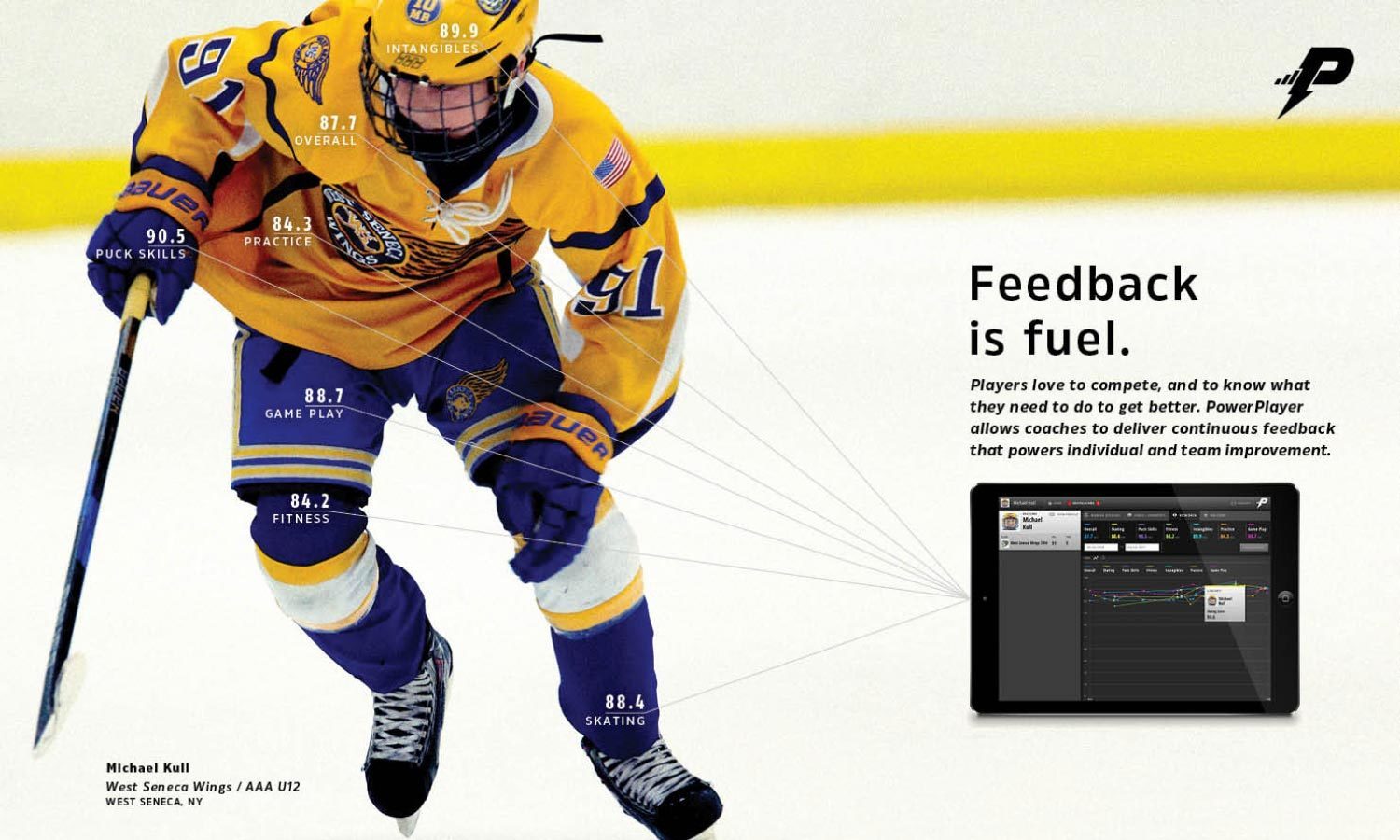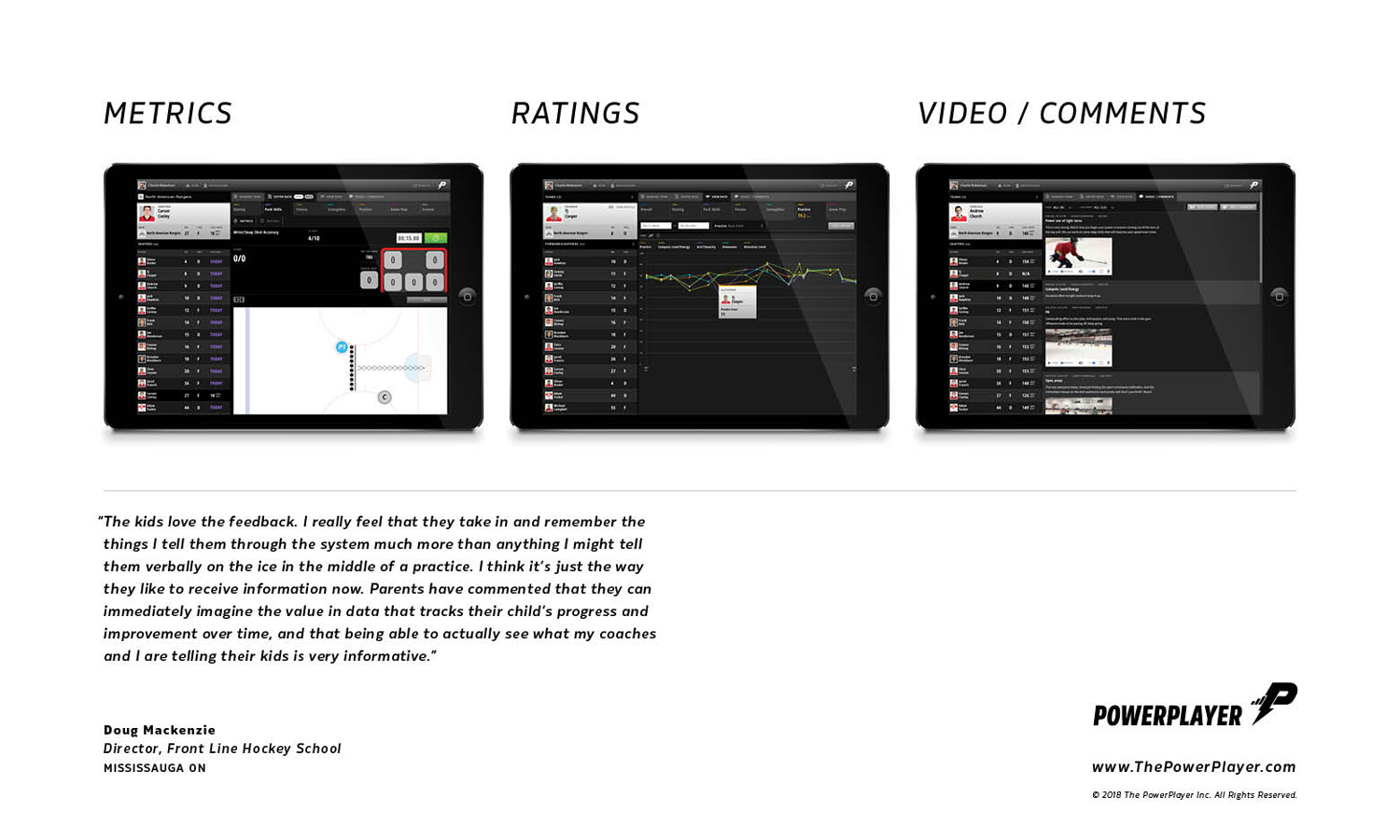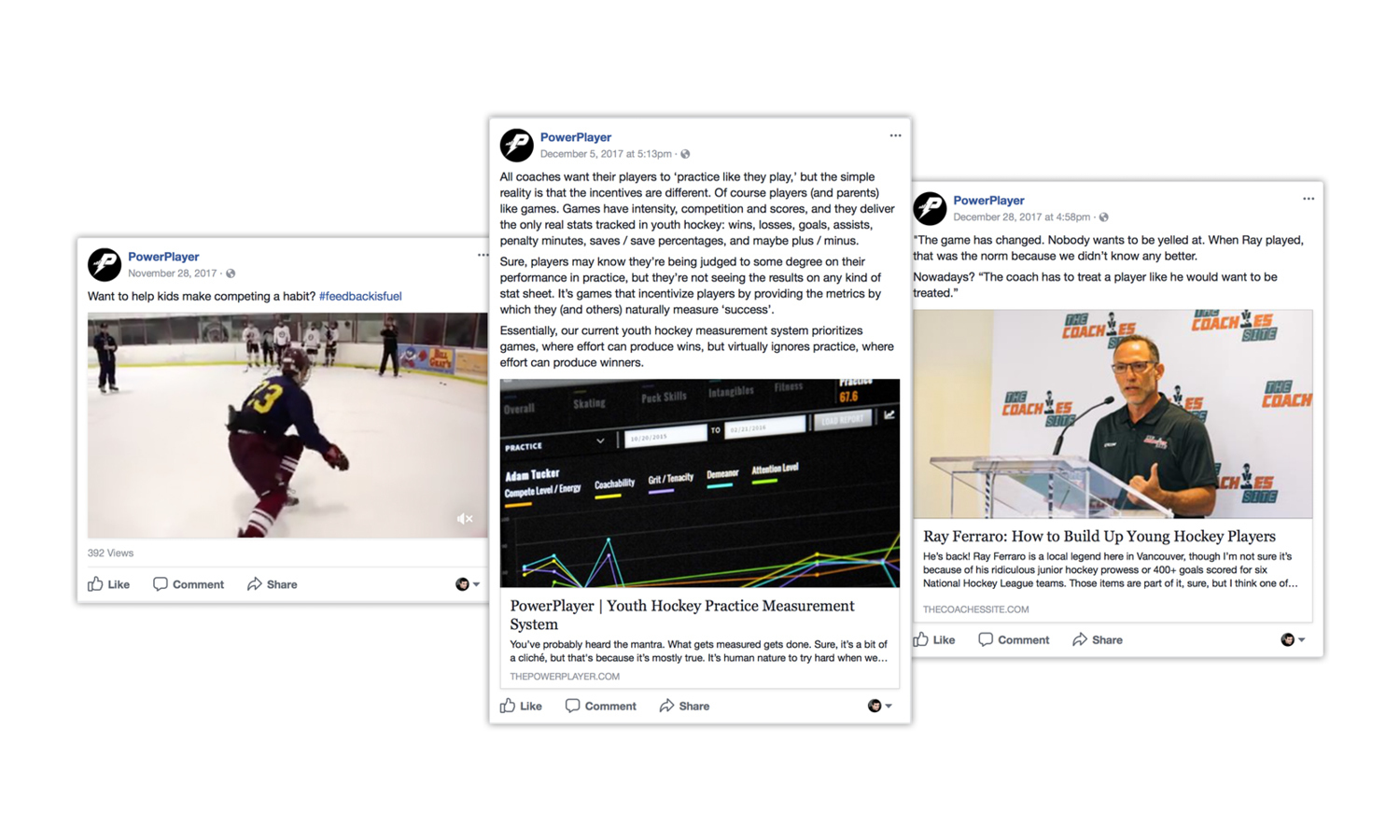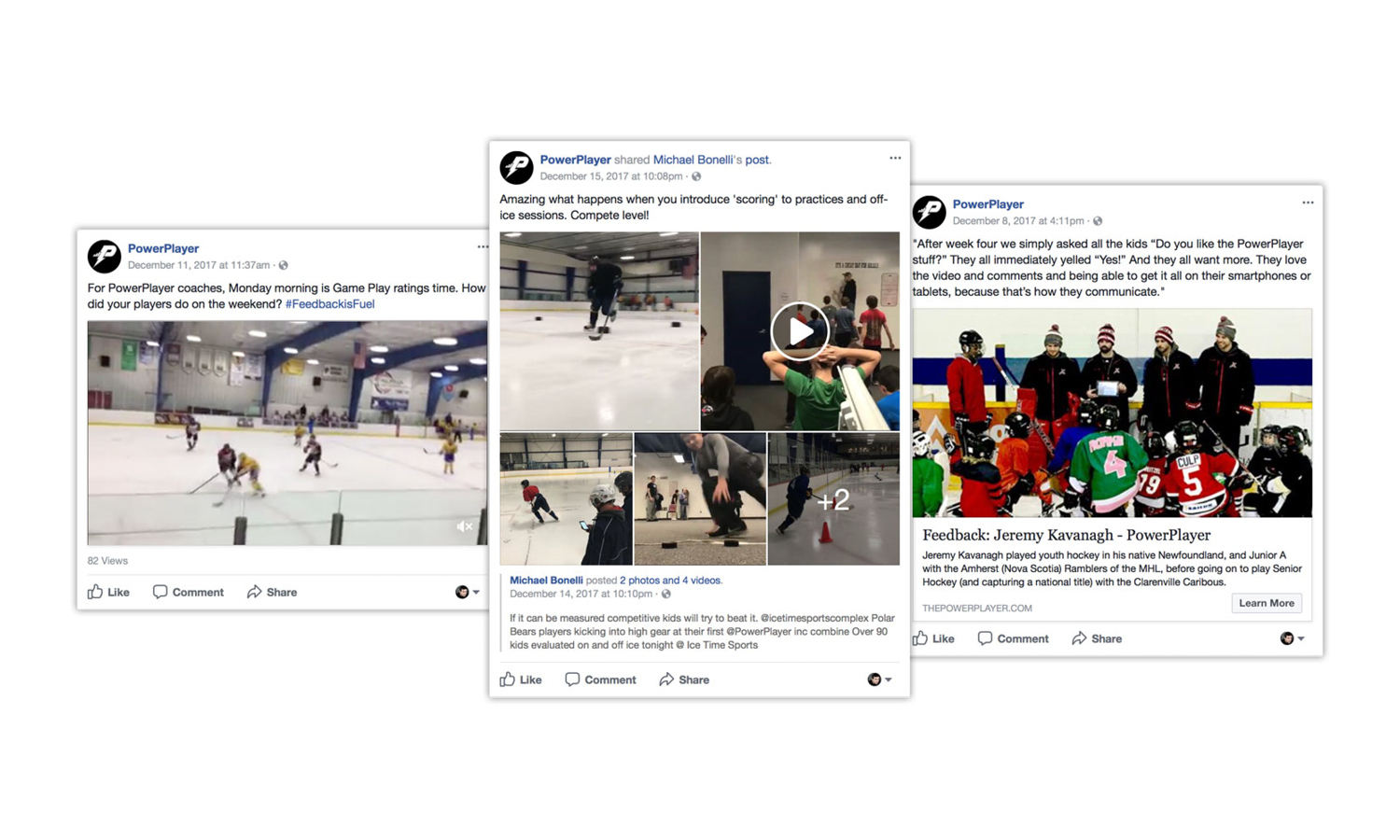PowerPlayer Inc. is a company focused on helping coaches provide meaningful, trackable feedback to athletes. Its feedback platform—built around a performance evaluation system or PES—was conceived and developed by a team of former athletes, coaches and parents.
As a parent, the idea of sending your child to school for 12 years without ever seeing a test result or a report card and rarely, if ever, speaking directly with their teachers would be absurd. But that’s essentially the scenario in which parents whose children are engaged in youth sports find themselves.
For example, although the governing bodies of youth hockey in both Canada and the US both stress that player evaluations are an important aspect of coaching, it’s rare for any meaningful or trackable progress reporting of any kind to be provided to parents over the many years that their children are being instructed by—and having their young lives partially shaped by—their coaches.
Those factors, combined with personal experiences with youth sports from both a parent and coach perspective, culminated in an idea for a low-cost SaaS-model product to help improve coach-athlete-parent communication and the relationships that depend on it.
Conceiving a game-changer
The central idea that grew out of those insights and experiences—combining the need for greater visibility into child-coach interactions with the known advantages that feedback loops (such as continuous grading and reporting in academics) deliver in terms of positively influencing behavioral change—presented an opportunity to create a new way for coaches to deliver continuous assessment, instruction and encouragement to their athletes, and to simultaneously provide meaningful insight about a young athlete’s progress to that child’s parents.
As an added benefit, the rich, cumulative data/feedback picture created by the system over time could be combined with self-reported information relating to academics, honors and other personal attributes to provide exactly the kind of in-depth athlete profile that colleges and, of course, athletic scouts and recruiters, look for.
Preseason preparation
After framing up and detailing out the basic concept, we connected with some like-minded partners, developed proof-of-concept models that met with favorable interest from people in Major League Baseball, the National Hockey League, and national and regional youth hockey and baseball organizations, formed a new entity, raised $1,000,000 in a private placement, and set out to see if we could make a positive difference in youth sports.
Because we wanted to create an athlete-centric system—the opposite of traditional scouting systems in which data is collected on a few athletes by a few people for the benefit of the organizations that collect it—we faced a number of challenges. Designing a robust and secure permission system through which to ensure that authority over read/write privileges on any account rests with the account holder was critical.
We also designed a data collection interface that would enable quick and easy input by distributed individuals, and developed an algorithm to translate complex, dissimilar data types into simple numerical ‘scores’. Working with advisors with NHL, AHL, Junior, National Team, and youth level playing, coaching, and scouting experience (for numerous reasons we elected to focus our initial efforts on hockey), we also developed a suite of dimensions—the various ‘things’ a player might be assessed on in both quantitative and qualitative terms—in order to deliver a meaningful picture of a hockey player over time.
With those core elements conceived, articulated and framed, and vetted by our advisors, we began the process of:
- naming the company and its products
- developing financial models
- executing a private placement
- developing and proving out the algorithms that underpin the system’s ‘scoring’ structure
- designing and testing user interfaces for account creation, permissions, data input and viewing
- designing and testing data visualization models
- working with very, very smart tech people to build a system that would deliver the goods
- executing an IP strategy (14 patents filed to date)
- designing a brand communication system
- developing and implementing Beta-test and go-to-market strategies.
Game time
PowerPlayer has already attracted the attention of numerous forward-thinking hockey organizations in Canada, the United States, and Europe. Their use of the system—establishing baseline metrics and ratings and inputting ongoing game and practice-related data—is providing us with a significant body of data with which to test and refine the data visualization aspects, and with valuable feedback relating to the overall system. Feedback from coaches and parents has been extremely positive, with many noting that they’ve seen a marked increase in the intensity and effort put forth by players during practices that involve PowerPlayer drills.

